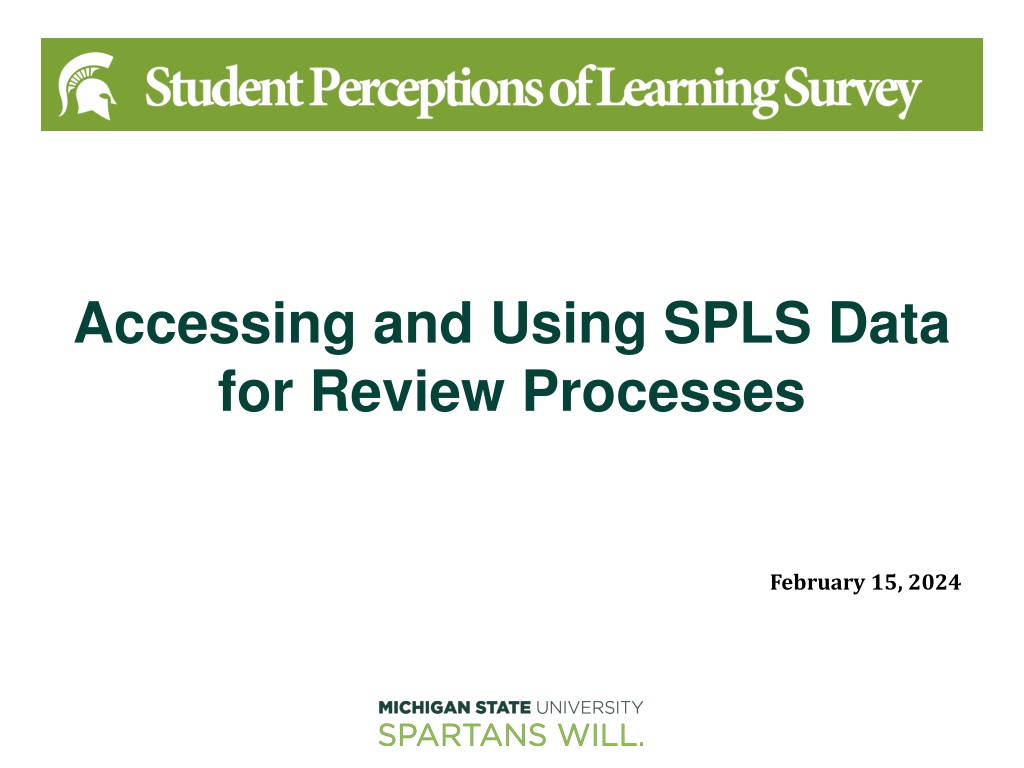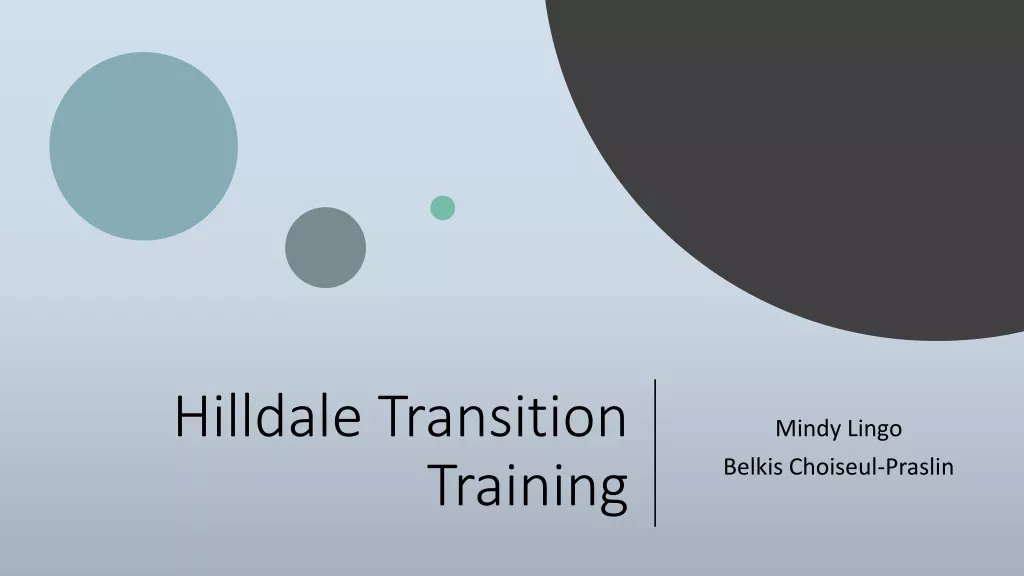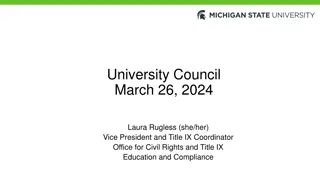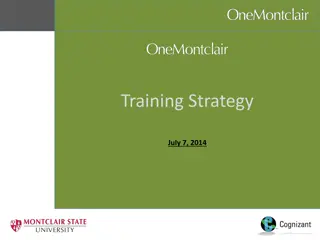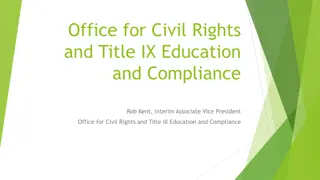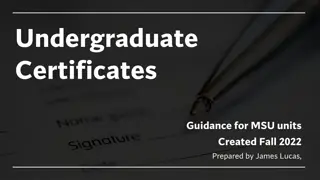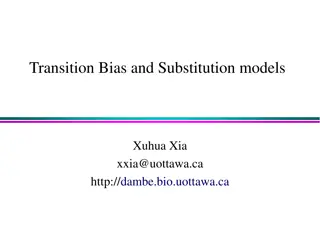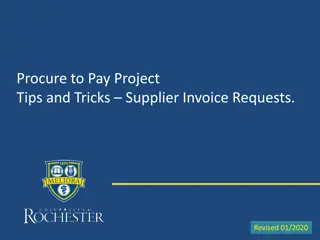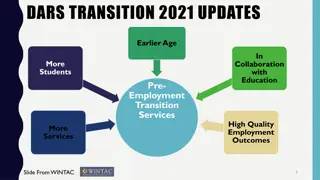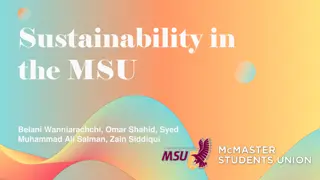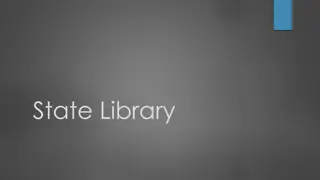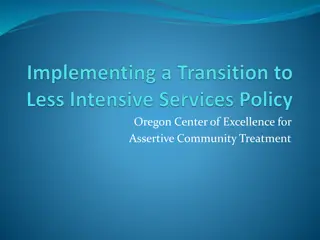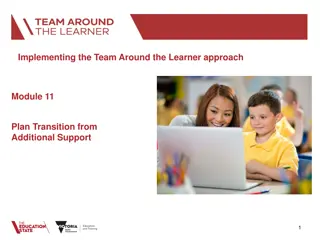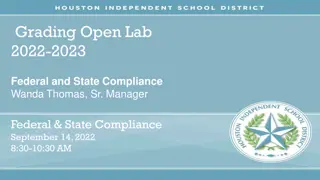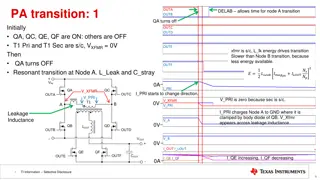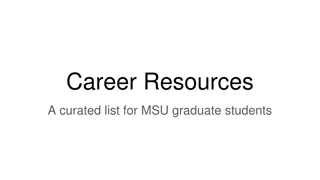Transition from SIRS to SPLS: Enhancing Teaching Quality at MSU
The transition from SIRS to SPLS at MSU aims to bring a research-informed approach to gathering and utilizing student feedback, leading to an improvement in teaching quality. This shift involves a cultural change to address biases in evaluating teaching practices. The SPLS system focuses on collecting feedback from all courses to provide valuable insights to instructors, teaching assistants, and students. It emphasizes enhancing instruction, supporting retention decisions, and aiding student decision-making in course selection.
Download Presentation

Please find below an Image/Link to download the presentation.
The content on the website is provided AS IS for your information and personal use only. It may not be sold, licensed, or shared on other websites without obtaining consent from the author. Download presentation by click this link. If you encounter any issues during the download, it is possible that the publisher has removed the file from their server.
E N D
Presentation Transcript
Accessing and Using SPLS Data for Review Processes February 15, 2024
AGENDA Transition from SIRS to SPLS A few SPLS basics Direct Access to SPLS data Using SPLS data for review processes Questions and Discussion
TRANSITIONFROM SIRS TO SPLS The transition from SIRS to the SPLS was initiated because of an aging IT system and because of longstanding reports to the Provost s office about biases and subjective use of SIRS results for evaluative purposes. If this was simply a switch to a new IT system, it would be much easier. This transition at MSU is largely about culture change, which is within the broader context of a national effort to transform the way that teaching is evaluated.
Beth McMurtrie | February 6, 2024 The Chronicle of Higher Education
TRANSITIONFROM SIRS TO SPLS The aim is to implement a research informed approach to gathering and using student feedback in conjunction with other indicators to enhance the quality of teaching at MSU. The purpose of the SPLS is to collect feedback from students in all courses to 1) provide instructors, graduate teaching assistants, and teaching units with feedback on their instructional practices; 2) contribute to instructor retention, promotion, tenure, and salary decisions; and 3) provide students with information to guide decision-making related to course selection (only available to students after two years of data have been collected).
SPLS BASICS: THESHIFTFROM SIRS TO SPLS SIRS was administered in courses with end dates of June 15, 2023 and earlier. The SPLS started with courses ending June 16, 2023 and later. The SPLS system does not retain historical SIRS data. SIRS data will remain available until the IT system permanently fails. Any SIRS data that has not already been downloaded and saved should be downloaded right away. SPLS data is stored in the MSU data warehouse so that it can be retained if/when the university shifts to a different IT system or vendor.
SPLS BASICS: UNIVERSITY-LEVELQUESTIONS Level of Interest. At the time of enrollment, my level of interest in this course was: Responses are used for statistical analysis (discriminant validity) Responses are not reported to instructors, department chairs, or deans Workload. Compared to other courses of equal credit, the workload for this course was: The purpose of this question is to provide students with information to guide decision-making related to course selection Responses are reported to instructors and will be reported to students in the future Responses are not reported to department chairs or deans and are not intended for evaluative purposes
SPLS BASICS: UNIVERSITY-LEVELQUESTIONS Expectations. I understood what was expected of me in this course: Organization. Overall, the course was well organized: Atmosphere. The instructor created an atmosphere that supported my learning: Instructor questions name the Faculty Member and/or Graduate Assistants in Campus Solutions Expanded understanding. The course expanded my understanding of the subject matter: Demonstrate understanding. Course assignments and/or tests provided opportunities for me to demonstrate an understanding of the course material: Interest increased. My interest in the subject has increased because of this course:
SPLS BASICS: OPEN-ENDEDQUESTIONS In addition to rude and mean-spirited comments, the clearest evidence of bias by respondents, especially related to gender and race, is in qualitative comments. There tends to be a low response rate in comparison to Likert scale responses within the same survey. Comments are difficult to aggregate as they may be contradictory and not reliable. Instructors, supervisors, and review committees are highly susceptible to biases such as novelty bias and negativity bias. And when comments are anomalous or do not correlate with quantitative item means, they often get disproportionate consideration by reviewers. The SPLE Policy does not permit open-ended questions among the university-level questions.
SPLS BASICS: OPEN-ENDEDQUESTIONS The SPLE Policy does not prevent colleges or departments from using open-ended questions. Those who choose to use them are strongly encouraged to also establish a protocol for managing rude responses and ensure that they understand what the research says about open-ended questions. Responses to open-ended questions are included in instructor reports because, if they are used at all, they may be useful for course improvement. But they are not included in college or department reports or dashboards as they are not appropriate for evaluative purposes.
DIRECT ACCESSTO SPLS DATA Instructors and graduate teaching assistants have direct access to their SPLS data and can submit that information along with other annual review/RPT/evaluation packet materials. In addition to the downloadable PDF reports emailed to instructors after the end of the term, instructors will soon have access to the SPLS Instructor Dashboard. This provides quick and easy access to all SPLS reports in one place. Data are viewable in static and dynamic forms. Deans and Dept Chairs/School Directors have direct access to SPLS data for their respective teaching units, which includes teaching-unit level data all the way down to individual course- section-instructor level data. The access currently available allows for annual review and RPT processes to move forward. Compiling a spreadsheet of instructor-by-instructor mean scores is not feasible in the SPLS system and is not an appropriate use of student perception survey data. Approaches like this often do not account for important contextual variables or consider other evidence related to teaching quality, which can perpetuate biases and inequities.
DIRECT ACCESSTO SPLS DATA Direct access to data is not available for support staff. Some departments had support staff download SIRS reports or data and add them to annual review and RPT packets. The onus is on instructors to submit SPLS information in their packets. This ensures that -instructors have viewed SPLS feedback at least once -they have an opportunity to add narrative to help evaluators understand contextual variables -they can package student feedback alongside other evidence of teaching quality, such as a teaching portfolio, peer observation, teaching narrative, syllabi and other course materials, and/or student artifacts.
USING SPLS DATAFORREVIEWPROCESSES The research on student perceptions of learning suggests that feedback is highly context specific. Students perceive that they learn better in small classes and that is reflected in survey results. Other context-specific attributes include degree level, discipline, and type of course (e.g., lecture, lab, seminar). Comparisons between instructors is rarely a one-to-one comparison. Instructors are encouraged to contextualize student feedback when including it in annual review and RPT processes. For example, highlight and describe the potential implications of class size, type of course, and nature of the course content.
USING SPLS DATAFORREVIEWPROCESSES In many respects, it is not necessary to compare instructor mean scores to department, college, or university mean scores. Feedback such as this suggests that the instructor could enhance the quality of the learning experience by focusing on the learning atmosphere. Some evaluators might immediately look for more information in student comments but pairing this feedback with other evidence of teaching such as a teaching narrative or syllabi and other course materials.
USING SPLS DATAFORREVIEWPROCESSES There is tremendous value in seeing feedback over time.
USING SPLS DATAFORREVIEWPROCESSES First, watch the Introduction to the SPLS Administrator Dashboard and Reports and review the SPLS Administrator Dashboard User Guide. Both are linked on the Administrators page of the SPLS website (spls.msu.edu). Useful Materials Instructor submitted narrative Instructor submitted reports Department or course-level mean score report SPLS Administrator Dashboard > filtered by instructor
Instructor submitted report and Instructor submitted narrative
QUESTIONSAND CONVERSATION WEBSITE The website (spls.msu.edu) is continuing to expand, especially FAQ sections CONTACT Your first point of contact is your office of the dean or the SPLS Liaison for your college OFFICE HOURS SPLS Office Hours by Zoom are open to everyone Access the link on the SPLS website homepage Tuesdays at 10:00am
